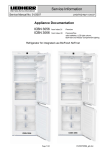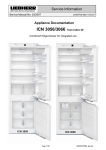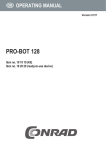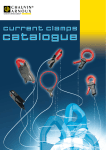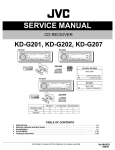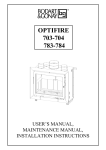Download DEFA CAN Installation manual
Transcript
Installation Manual, DEFA Auto Security Car Alarm 800 Series 8028 (D11) 1 DEFA Auto Security 800 Series Glassbreake Sensor Microwave Sensor Backup Alarm Immobilizer Module 8028 (D10) 2 " 50 Green, unlock NO Violet, unlock NC P1.7 Red/white, +12V output P1.1 - + 25 A P3.4 P3.1 4 P3 1 Grey/red, light output 1 Grey, door switch 1 7 14 P4.5 P4.6 P4.7 Grey/black, light output 2 P4.14 Red, +12V P3.2 Black/grey, bonnet switch Red/black, Starter kill input 1 4 P2 Black, ground P3.3 White/green, Starter kill output White/orange, lock NC P1.2 P1.3 P1.4 Yellow, unlock COM Black/white, ground output White/brown, lock NO P1.6 P1.8 White/blue, lock COM P1.5 5 8 P1 P4 8 1 2 P4.11 P4.12 P4.4 1 3 1 Black, siren Black, siren 2 P6 P7 P8 Grey/white, doorswitch 2 White/red, auxiliary equipment White, luggage compartment switch White/brown, ignition 1 P6 P7 P8 P4.10 P4.8 P4.9 P5 15 Wiring diagram 3 Tools 4 Contents Wiring diagram Instructions for wiring diagram Preparations for installation Positioning of the Alarm Units Attention! User instructions Coding new Remote Control Units Connection of Central Locking Programming of alarm Technical data Approval Page 3 Page 6-8 Page 9 Page 9-10 Page 10 Page 11-12 Page 13 Page 13-14 Page 15-19 Page 20 Page 20 5 Instructions for the wiring diagram --- Further information, see technical manual. P-1 Connection of Central Locking cf. page 6 P-2 Multiplug, Backup Alarm, Immobilizer Module and Pager (auxiliary equipment) This is the connection for auxiliary equipment such as the DEFA Backup Alarm, the DEFA Immobilizer Module or the Pager (Remote Alarm). Cf. separate assembly instructions. P-3.1 Current supply, red lead To be connected to a distributor via a 25A fuse (fuse box). P-3.2 Input, starter kill, red/black lead (only applies to 821X models) Separate control current lead from the ignition lock to the starter (connection 50) near the ignition lock. Connect the lead end coming from the starter with P-3.2 red/black lead. P-3.3 Ground, black lead Connect directly to the vehicle body. Important: lead must not be extended. P-3.4 Output, starter kill, white/green lead (only applies to 821X models) The other lead end (50) leading to the starter is connected to P-3.4 white/green lead. P-4.1 Channel 3 Output for the Remote Control of the electric DEFA Car Heating System. When activated, the output supplies +12V until the function is deactivated again. Maximum load: 350 mA. P-4.2 Channel 2 When activated, the output is grounded until the button is pressed. Use as required. Maximum load: 350 mA. P-4.3 Channel 1 Output for electrical luggage compartment opener. When activated, the output is grounded for 1 second. This functions only when the alarm is switched off. Maximum load: 350 mA. P-4.4 Auxiliary equipment, white/red lead This alarm loop protects integrated auxiliary equipment in the car such as radio/cassette players or similar equipment. The circuit is normally closed (NC) and triggers the alarm when interrupted. P-4.5 6 Door trigger 1, grey lead This input is normally open (NO) triggers the alarm when a contact to ground is made. Connect to the existing door switch circuit of the car. If the car has two separate circuits from the front and rear interior illumination, door trigger 2 (P-4.12) can be used for the rear doors, and input P-4.5 can be used for the front doors. P-4.6 Bonnet trigger, black/grey lead This input is normally open (NO) and triggers the alarm when connected to ground, i.e. when the bonnet is opened. Install DEFA Bonnet Switch. This should be installed in such a position as to make it inaccessible from either the underside or the front of the car. P-4.7 Light output 1, grey/red lead Connected directly to the right turn signal lamp circuit in the car. Maximum load: 7.5 amp. (90 watt). Fused with automatic circuit breaker. P-4.8 Siren Output to Siren. Connect the two Siren leads to P4.8 and P4.9. P-4.9 Siren Output to Siren. Connect the two Siren leads to P4.8 and P4.9. P-4.10 Ignition signal, white/brown lead Connect lead to ignition output of ignition switch. P-4.11 Luggage compartment trigger, white lead Connect to the normal luggage compartment switch if it is switched to ground. If it is switched to positive, a DEFA Polarity Inverter must be used. P-4.12 Door trigger 2, grey/white lead This input is normally open (NO), and triggers the alarm when contacted to ground This is an additional door switch input for NEGATIVE switches and is used particularly when there are separate circuits for the front and rear doors. P-4.13 DEFAnet This output can control DEFA Power Module. P-4.14 Light output 2, grey/black lead Connected directly to the left turn signal lamp circuit in the car. Maximum load: 7.5 amp. (90 watt). Fused with automatic circuit breaker. 7 P-5 Plug for auxiliary Sensors Cf. separate assembly instructions. P-6 Plug for Glassbreake Sensor Standard for all models with the letter G in the model designation. If a window is broken, the Glassbreake Microphone triggers the alarm. P-7 Plug for Microwave Sensor Standard for all models with the letter M in the model designation. If the sensor detects motion in the vehicle interior, the alarm is triggered. P-8 Plug for LED Universal LED bracket: The LED can be installed on the instrument panel, on the A-pillar, the windscreen or at any other position desired. Embedded LED bracket: Use an 8.0 mm drill if the bracket is to be embedded in metal plates, a 7.5 8.0 mm drill for plastic material and a 7.0 mm drill for padding material. 8 Preparations for installation Further information, see technical manual. The workshop always holds complete responsibility for performing all necessary safety measures on installation of the alarm system. Observe any instructions issued by the car manufacturer. Before making any connections, use a voltmeter/multimeter to check the connection points. Always ensure that the connection points are well insulated by using, for example, shrinkdown plastic tubing or insulation tape. Avoid installing connection points or installation components in the immediate vicinity of airbag modules or other safety systems. The alarm can act on all petrol and diesel cars having a 12V power source. Important: DEFA alarm modules, series 820 (without DEFA Immobilizer), may only be installed in vehicles with approved original Immobilizers; if this is not the case, the Alarm will not be subject to type approval. A list of recognised original start lock systems is available from DEFA or the DEFA representative in your country. Positioning of the Alarm units Central Unit Attach the Central Unit below the instrument panel or at a suitable point in the vehicle interior using plastic fastening strips. The Central Unit should not be visible, and should be as inaccessible as possible. Important: The Central Unit must be installed with its plugs facing downwards to ensure that condensation water cannot run along the cables into the unit. Main fuse The main fuse (25 amp.) should be attached in the vicinity of the current power source. Siren Install in the engine compartment, exposed as little as possible to spray water and heat from exhaust or turbocharger components (minimum distance 30 cm). The Siren aperture must face downwards to prevent water accumulating in it. Important: Never install the Siren with the aperture facing upwards. The Siren must not be accessible from the underside of the car. Important: Never install the Siren with the aperture facing upwards. Glassbreake Sensor The Glassbreake Microphone is installed on the instrument panel or in the centre console. Clean the installation surface with a grease dissolving agent and then fasten the Glassbreake Sensor with the enclosed double-sided adhesive tape. LED Install in instrument panel using the embedded bracket or fasten to the instrument panel/windscreen using a universal bracket or double-sided adhesive tape. The LED must be clearly visible from outside. Microwave Sensor The preferred location is at the centre of the car roof, 40 cm from the windscreen, under the roof lining. If this is not possible, it can be installed in the centre console. The sensor can be installed behind plastic covers but not behind metal covers, as these would block the waves from the sensor. Please note that some cars have a thin metal film in the roof lining. In these cases, the sensor must not be installed behind this lining. 9 If the sensor is attached to the inside of the roof, the arrow with the mark UP is usually located on the underside of the sensor and points towards the rear of the car interior. If the sensor is attached to the centre console, the arrow with the mark UP is usually located on the side of the sensor facing the interior. The sensitivity of the sensor must be checked and, if necessary, adjusted after installation. Important: Loose metal objects such as keys, coins, etc., can trigger the alarm if they are too close to the sensor. Antenna feed lead The active (white) part of the antenna must be attached in as free a location as possible, and not in the vicinity of metal or other leads. The position of the antenna is a major influence on its range. Alarm signs (decals) Attach DEFA Auto Security decals to both the front side windows and to the windscreen or rear screen. Important: The decals must not obscure the driver’s line of sight. The sticker with details of the alarm model is attached in the glove compartment. The relevant model is checked. Attention! • • • • The DEFA Auto Security Alarm Module should be installed in accordance with the manufactorer’s instructions. The selection of a good installer is recommended. The national distributor may be contacted to indicate appropriate installers. The installation certificate supplied with the alarm shall be completed by the installer. Making any alterations or additions to the alarm will automatically invalidate the certificate of installation. 10 User Instructions Further information, see technical manual. Your DEFA Auto Security Alarm is activated using the two buttons (A and B) on the Remote Control. The two buttons are easy to tell apart, as button A is noticeably higher. Button A Button B «Press» means that you press the button for a maximum of 1 second. «Hold» means that you press the button for at least 2 seconds Alarm ON (arm) Press button A. The turn signal lamps flash once and the alarm siren emits a «click» to confirm that the alarm is ON. The LED illuminates for 20 seconds and then starts to flash, to confirm that the alarm and the Glassbreake/Microwave Sensor are switched ON. Press button A Temporary deactivation of Sensors You can also set the alarm to ON without activating the sensors for motion in the interior or impact against the screen. This can be necessary if, for example, a pet is left in the vehicle. Quickly switch the ignition ON and OFF again. Exit the vehicle and, within 30 seconds, press button A twice briefly (maximum 3 seconds between pressing). The LED starts flashing immediately. The turn signal lamps illuminate for approx. 1 second. The sensors are reactivated when you switch ON the alarm the next time. 11 Alarm OFF (disarm) Press button B. The turn signal lamps flash twice to confirm that the alarm is OFF. The LED stops flashing. Press button B If the alarm was triggered during your absence, the turn signal lamps flash five times and the alarm siren emits a «click» five times when the alarm is disarmed. The LED now flashes to indicate which sensor had triggered the alarm. (cf. table page 16). Emergency deactivation If the Remote Control is broken or lost, deactivate the alarm as follows: Your Emergency Code is: DEFA Central Unit 821X P/N:10011 D S/N: 1234567 PIN-kode: X- X- X- X- X Manufactured by DEFA A.S, Norway DEFA Hotline : 4732771540 1. Unlock and open the car door. The Alarm is activated ! 2. Turn the ignition ON and OFF five times in a row. The Led "flickers". 3. When you turn ON the ignition once again, the Led will blink. Let the Led blink as many times as the first digit of your PIN-kode, and turn OFF the ignition. 4. Turn ON the ignition and repeat the procedure until you have gone through every digit in your PIN-kode. The Alarm is now disarmed. If you make a mistake, start over again at step 3. Start the car immediately ! A. Consult your card with the PIN code and locate your five-digit PIN code (Personal Identification Number) B. Follow the instructions on the emergency code card Important: If you make a mistake, you can repeat the procedure from 3. onwards as often as required. Important: Don’t forget - keep your PIN Code on your person. Do not leave it in the car! 12 Coding of new Remote Control Units Further information, see technical manual. A Press button B to switch the alarm and the Immobilizer (if present) OFF. The emergency deactivation can also be used. B Switch the ignition ON and OFF 5 times. The LED flashes rapidly. C When you switch the ignition ON again, the LED should flash. Allow the LED to flash as many times as the first number of your PIN code and then switch the ignition OFF again (the LED stops flashing). D Switch the ignition ON again and repeat the procedure until all digits of the PIN code have been entered. E The LED flashes rapidly. If you make a mistake, start again at «C» with the first digit of the PIN code. F Switch the ignition ON again and press buttons A and B of the Remote Control Unit being programmed simultaneously (one Remote Control Unit at a time). Press both buttons until you receive the sound and light confirmation. G Switch the ignition OFF once all Remote Control Units have been coded. Important: Coding the keys deletes the old codes, A maximum of 4 Remote Control Units can be coded. Connection of Central Locking Further information, see technical manual. P-1 Multiplug, Central Locking Plug for connection of the Central Locking, cf. diagram, page 14 The plug for the Central Locking P-1 must be configured (assigned) for the relevant car. If the function of the Central Locking is unclear, the original circuit diagrams for the car must be consulted. Always check with a voltmeter/multimeter before making any connections. The leads in the P-1 plug which are not used must be disconnected or insulated. Important: Each relay in the Central Unit can be loaded with a maximum of 15 amps. The Central Unit can become damaged if correctly wired or overloaded. Output P-1.1 is fused by an automatic circuit breaker. P-1 Plug P1.1 P1.2 P1.3 P1.4 P1.5 P1.6 P1.7 P1.8 Function Battery + Lock NC Ground Unlock COM Lock COM Lock NO Unlock NO Unlock NC Colour Red/white White/orange Black/white Yellow White/blue White/brown Green Lilac 13 The circuit diagrams below show the usual circuit options. LOCK UNLOCK +12V +12V 15A GND 1 4 8 7 BLUE 5 2 6 UNLOCK LOCK GND 15A 1 3 4 8 7 2 5 6 3 GREEN To DEFA central lock motor A : LOCK AND UNLOCK 1 +12V UNLOCK LOCK +12V GND 15A 1 4 8 7 5 2 4 6 UNLOCK GND 15A 3 1 4 8 7 5 2 6 3 A : LOCK B : UNLOCK B : UNLOCK LOCK A : LOCK 2 +12V UNLOCK LÅS +12V 15A GND 1 4 B : UNLOCK 8 7 5 2 5 6 UNLOCK LOCK GND 15A 3 1 A : LOCK 4 8 7 5 2 6 3 A : LOCK AND UNLOCK 3 6 14 Programming the alarm Further information, see technical manual. The alarm contains a register that allows various functions to be programmed or altered using the Remote Control and the ignition key. Please read the detailed function description on the following pages. Function 1 2 3 4 5 6 7 8 9 10 11 12 13 Description Cause of Alarm trigger Number of Remote Controls Alarm sounds Passive arming The sensitivity of the Microwave Sensor Remote Control with Slider Switch Central locking - time Central locking - security function Starter kill/Immobilizer Convenience locking Panic function (Remote triggering of alarm) Production settings Entry of PIN code for Immobilizer Definition of pressing and holding programming buttons on Remote Control : Press means: press for a maximum of 1 second. Hold means: press for at least 2 seconds. Procedure for programming: A) Switch the ignition ON and OFF five times. The LED flashes rapidly. B) Switch the ignition ON again, allow the LED to flash twice and switch the ignition OFF again. Repeat 5 times. After the fifth time, the LED will flash rapidly when the ignition is switched OFF again. C) Switch the ignition ON. Press button A to activate function 1. The function that is active is indicated by the number of sound signals. D) Pressing button A again activates the next function. Hold button A to return to the previous function. E) Once you have reached the desired function, you can program or alter the function as described on pages 16, 17, 18 and 19. F) If you want to program some more functions, press button A. You can then select the function by either pressing or holding button A. G) Once you have completed programming, switch the ignition OFF. 15 Function 1: Cause of Alarm trigger Press button A to obtain information about the cause of the alarm last triggered. Press button B for information about the alarm triggered previously. Hold button B to return to the last alarm. Hold buttons A and B simultaneously to delete the trigger cause memory. The Central Unit can store up to 10 alarm events. Alarm triggered by: Number of flashes Auxiliary Sensor 1 2 Open door 3 Open bonnet 4 Open luggage compartment lid 5 Ignition 6 Attempt to remove secured object (stereo, ski box, etc.) 7 Microwave Sensor 8 Glassbreake Sensor 9 Auxiliary Sensor 2 10 Function 2: Number of Remote Control Units Press button B to learn how many Remote Control Units are connected to the alarm. The number of units is indicated by the number of flashes. Function 3: Alarm sounds Press button B to activate the set alarm sound for 5 seconds. Press button B again to select the next alarm sound and hold button B to return to the previous sound. A total of 6 different sounds are available. Function 4: Passive arming Passive arming means that the alarm is switched on 12 seconds after the ignition is switched off and the doors are closed. Press button B to indicate: 1 flash if active arming is selected 2 flashes if active arming is selected regardless of the opened door. 3 flashes if passive arming is selected. Press button B again to select the next function. The number of confirmation sounds indicates the status currently set. Function 5: The sensitivity of the Microwave Sensor For Control purposes the sensitivity level of the detector is indicated by a number (1- 8) of short signals in the LED.The lowest level is 1, the highest is 8. Factory setting is 3. Press button B to indicate the valid sensitivity level. Press button B to increases the sensitivity level while holding button B reduces the level. The number of flashes in the LED indicates the level. Selected sensitivity level is confirmed by releasing the detector. Last choosen step will be selected sensitivity level. 16 Function 6: Setting of Remote Control with Slider Switch The Remote Control with Slider Switch can be programmed for 3 different modes: Programming Press A Hold A Press B Hold B 1 flash Alarm ON Close windows Alarm OFF Windows open 2 flashes Alarm ON Close sliding roof or Channel 2 3 flashes (Standard) Alarm ON Close tilted sliding roof or Channel 3. (Car heating ON) Alarm OFF Alarm OFF Position of Slider Switch Open sliding roof or Channel 1. (Open luggage compartment) Tilt sliding roof or Channel 3. (Car heating OFF) Programming 1 provides the functions in line 1 of the table Programming 2 provides the functions in lines 1 and 2 of the table Programming 3 provides the functions in lines 1, 2 and 3 of the table If programming 1 is selected, the middle and top Slider Switch positions can be used to operate the alarms in 2 other cars. If programming 2 is selected, the top Slider Switch position can be used to operate the alarm in one other cars. If only the electric window winders are to be operated, the original Remote Control can be used (1:1). A Remote Control with Slider Switch is not required. A precondition for programming is that the Remote Control has been coded with the Slider Switch in the bottom position. Press button B to indicate the programming of the Slider Switch: 1 signal corresponds to point 1, 2 signals to point 2 and 3 signals to point 3. Press button B again to select the next programming procedure or hold button B to select the preceding programming procedure. The number of confirmation signals indicates the selected programming procedure. 17 Function 7: Time for Central Locking Press button B to indicate the current Central locking pulse factor. 1 flash = 1 second pulse 2 flashes = 4 seconds pulse 3 flashes = 0.5 seconds pulse Press button B again to select the next pulse length, hold button B to select the preceding factor. The number of confirmation signals indicates the selected pulse factor programmed. Function 8: Security functions of Central locking Press button B to indicate the current setting. When this function is selected, it prohibits activation of the alarm until you have exited the vehicle. This function is intended for vehicles with a locking system for the Central Locking. 1 flash = Security function not selected (Standard) 2 flashes = Security function selected Press button B again to select the next function. The number of confirmation signals indicates the current status. Function 9: Start lock/Immobilizer Press button B to indicate the current setting. Starter kill: The lock function is switched on at the same time as the alarm is armed and is deactivates as soon as the alarm is switched off again. Immobilizer: This locking function is activated automatically 30 seconds after the ignition is switched off and a door is opened. The Immobilizer is deactivated when you switch off the alarm. If you do not start the car within 30 seconds after opening the doors, the Immobilizer is activated again. 1 flash = Immobilizer is selected (standard on 823) 2 flashes = Starter kill is selected (standard on 821) Press button B again to select the Immobilizer, hold button B to select the start lock. The number of confirmation signals indicates the current status. Function 10: Convenience closing Switching on the alarm can simultaneously lock the doors and close the sliding roof. Press button B to indicate the current setting. 1 flash = Function is not selected (standard) 2 flashes = Convenience closing via the original system 3 flashes = Convenience closing via DEFA Power Module, closes only electric window winders Press button B again to select the next convenience closing mode or hold button B to select the preceding one. The number of confirmation signals indicates which convenience closing mode is selected. Application of function: Hold button A until all elements are closed. Function 11: Panic function 18 Press button B to indicate the current setting. 1 flash = Function is not selected 2 flashes = Panic function is active when buttons A and B are held simultaneously (standard) 3 flashes = Panic function is activated for 30 seconds after buttons A and B were held simultaneously. The buttons can be released in the meantime. Press button B again to select the next function. The number of confirmation signals indicates the current status. Function 12: Factory settings The following settings are provided ex works: Function 3: Alarm sound no. 1 Function 4: Active arming Function 6: Programming of all functions (setting 3) Function 7: Activation time of Central Locking; 0.5 seconds Function 8: Security function not selected Function 9: Start lock selected (821). Immobilizer selected (823) Function 10: Convenience closing; OFF Function 11: Panic function, active for as long as A and B buttons are held If the actual settings differ from the factory settings, they can be reset to the above settings by pressing button B. Function 13: Entry of PIN code in Immobilizer Unit If an Immobilizer module is retrofitted or replaced, the PIN code must be entered into the alarm to allow the vehicle to be started. 1. Press button B 2. Switch ignition OFF 3. Switch ignition ON, allow LED to flash the same number of time as the first digit of the Immobilizer PIN code 4. Switch ignition OFF 5. Repeat points 3 and 4 until you have entered all of the digits of your PIN code. When the ignition is switched off for the last time, the LED will flash rapidly. This means that you have completed the coding. 6. If you make a mistake, you will have to restart the procedure from the beginning. 19 Technical data Central Unit, 800 series Operating voltage: 9-15 V d.c. Operating temperature: -40°C to +85°C Exterior dimensions: 159 x 80 x 34 mm Power consumption 820/821X-G: 820/821X-M: 820/821X-MG: 820/821X-MG Backup 823X-MG: Armed Disarmed 13 mA 19 mA 19 mA 29 mA 19 mA 18 mA 18 mA 18 mA 35 mA 18 mA Approval The EEC approval mark will be affixed on a label that is placed on the rear side of all the units approved. 20





















